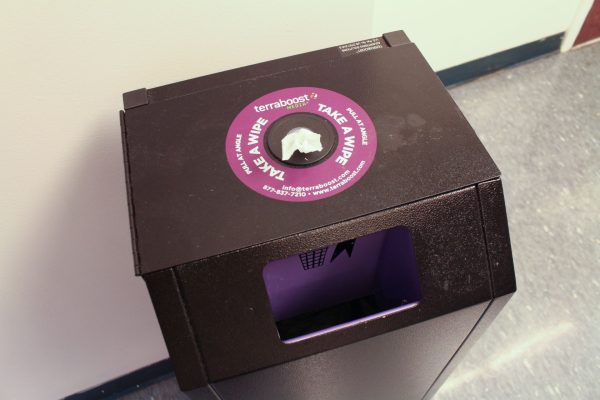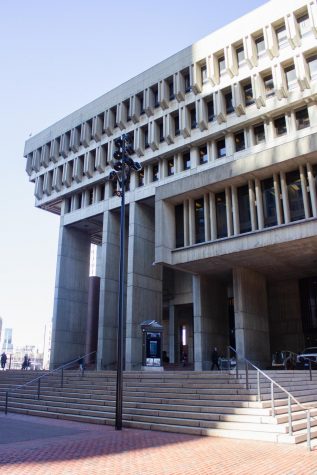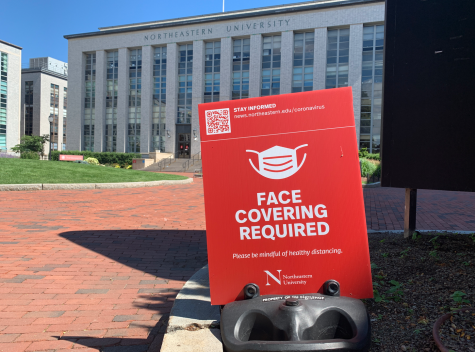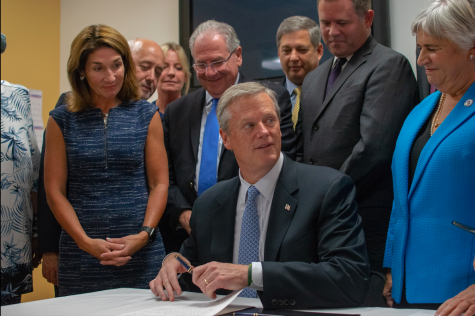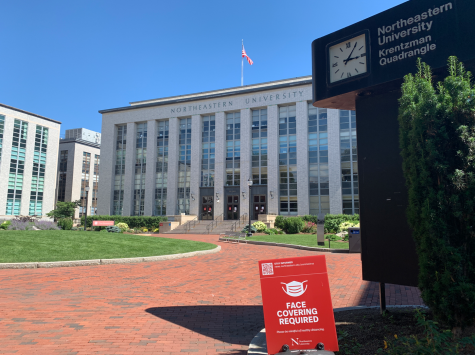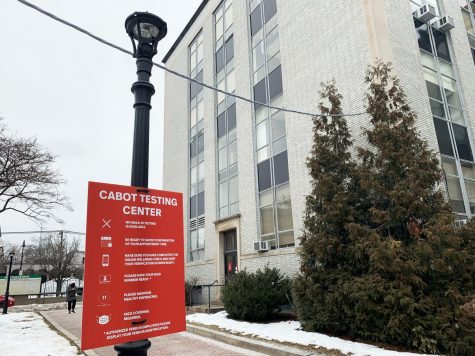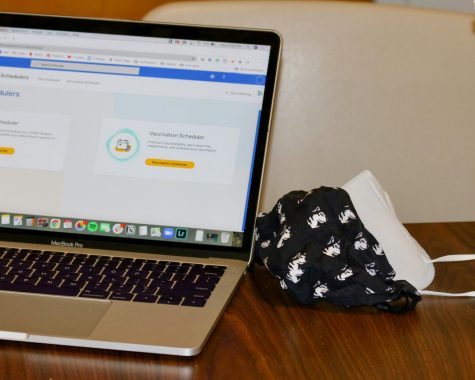University instructs faculty to encourage in-person learning for spring semester
The university updated its NUflex policy for the upcoming fall 2021 semester.
February 5, 2021
Northeastern University officials asked faculty members for help with one thing before classes started: encouraging students to attend in-person classes.
In an email sent Jan. 14, university officials urged teachers to promote in-person classes rather than online attendance. The email included strategies for getting students to come to class, including specific language to be used in syllabi, and reminding students of what university officials believe are the benefits of in-person learning. Screenshots of the email were posted to Twitter and received criticism from faculty and students.
The email also introduced a peer-to-peer social media campaign with the slogan “Moments that Matter,” that launched on TikTok and Instagram. One of the videos, posted to Twitter, reminds students how to use the dynamic scheduling tool to set their preference to primarily in-person and says, “When you’re in the classroom you’ll find moments that matter. Don’t miss the moments that matter.”
Students were also encouraged to attend class to avoid feeling lonely and unmotivated. The email noted that “Feelings of social isolation and low motivation can affect learning” and that “Campus is one of the safest places you can be.”
Thomas Sheahan, senior vice provost for curriculum and programs, said the university sent the email in response to a decrease in in-person attendance, which he said was in line with national trends. Sheehan said students choose to remain at home when they see other students doing the same.
“It ends up being a self-fulfilling prophecy of ‘Well, I’m not going to go today because no one else is going and then it’s not as fun or energizing or stimulating,’” Sheehan said. “And then they don’t go. Gradually, several students decide that, and by the time you’re done there’s only a few students left in the class, and they’ve created an environment where people aren’t there any more.”
Sheehan said the intention of the email was to encourage teachers to engage with their students so they feel compelled to come in person and remind students that coming to class may be beneficial.
“It’s called social learning — [students] learn better when they’re together, they learn better when they see a faculty member who’s role modeling, who’s using terminology in-person with them. So there’s a lot of benefits for students to be in class,” Sheahan said.
Despite what Sheahan describes as the university’s intentions, the directive was not well received by Ryan Cordell, associate professor of English, who posted screenshots of the email to Twitter. In a thread, Cordell called the action “unconscionable,” “reckless,” and said there was “no moral justification” to encourage behavior that, he said, contradicts public health guidelines.
Cordell, who describes himself as “further down the spectrum of public health” and said he is “skeptical” of any amount of in-person learning, said encouraging more in-person learning is irresponsible.
“Cases are going up and the public health is not moving in a direction where it would lead me to believe it’s responsible to encourage people to be more in person,” Cordell said in an interview.
His son could be heard in the background banging on his drum set. Cordell is teaching entirely remote because his wife is classified as high-risk for COVID-19. He said his classes are mostly discussion-based and translate well to Zoom, but poorly to a masked and distanced hybrid model.
Cases are going up and the public health is not moving in a direction where it would lead me to believe it’s responsible to encourage people to be more in person.
— Ryan Cordell
What upset him most, however, was the manipulative manner in which the administration approached the matter, he said. Thus far, the university has had a policy of personal choice and has given students the latitude to determine their own risk tolerance. He felt the email exploited student-teacher power dynamics.
“It felt like trying to co-opt faculty into explicitly encouraging something that was irresponsible,” Cordell said. “I know the power dynamics in the classroom are such that if the professor says ‘I’d love to see you in class,’ students will read that as potentially something they have to do, rather than something they have a choice about.”
He also found the university’s citing of mental health as disingenuous; to him, it seems the biggest benefit of in-person learning is that it looks good for the school.
“It wasn’t clear to me for what reason, other than the optics of having students in the classroom,” he said.
Cordell took to Twitter because he finds the university is often more responsive to public pressure than to internal expressions of concern. He said it was necessary to use the protections of his tenure to hold the university accountable. No disciplinary measures were taken against Cordell, but he said administrators have expressed their disapproval for his actions.
His tweet received over 160 retweets and nearly 350 likes. Many students and faculty members joined Cordell in his criticisms of the university’s directive.
Soraya Pierre-Louis, a fifth-year biology major and student employee in the Curry Student Center, retweeted Cordell’s tweet adding: “Every day we are sent as lambs to slaughter.”
She said her comment was partially a joke, but refers to the fact that many students will listen blindly to professors’ recommendations, even if it puts them in a dangerous and, potentially, deadly situation.
Pierre-Louis also took offense to the university citing mental health as a reason to “ignore public health recommendations.” As a former resident assistant, or RA, she said she has seen firsthand the inadequacy of mental health support on campus. University Health and Counseling Services, or UHCS, employs nine counselors for over 14,000 students. Pierre-Louis thinks, if Northeastern cares about students’ mental health, they would direct their attention to improving services through UHCS and the Northeastern University Police Department, or NUPD.
As an RA, she frequently found herself sending students to UHCS, or feeling that she had no choice but to call NUPD on a student.
“Students came back to me crying saying, ‘UHCS wouldn’t help me,’ or ‘NUPD laughed in my face,’” she said. “Usually the reply from Northeastern is we have 24/7 help, but students keep coming back saying it’s not helpful.”
While Pierre-Louis agrees that many students are feeling socially isolated, she doesn’t see the correlation to improved learning. Social isolation is an unfortunate consequence of the pandemic and impacts far more than just learning.
“It’s been a year of recorded COVID-19 cases, so people are kind of used to social isolation whether they like it or not … I don’t think students are thinking ‘my social isolation is affecting my learning.’ The whole world facing a pandemic is affecting every aspect of life, not just classes and learning,” Pierre-Louis said.
She said she struggles with these feelings, but still isn’t willing to go to class in-person most days.
“There’s a lot of fear on Northeastern’s campus and I don’t think the administration is understanding that students are scared on a day to day basis but are not going to say it,” she said. Her twitter bio reads, “tweeting for n0rtheastern students who are scared to tweet.”
Sheahan said he receieved no feedback about the email. Sheahan said that he and another senior administrator meet weekly with associate deans and faculty of undergraduate and graduate education to get “very frank feedback” about concerns from teachers.
We’re very socially distant, there’s only a few people in the classroom, everybody is wearing a mask. It’s better than going into a restaurant where people take their masks off to eat. Here everyone is keeping their masks on and there are very strict limits on how many students can be in the classroom.
— Dan Kennedy
Dan Kennedy, professor in the School of Journalism, doesn’t “really have a problem” with the email, nor with encouraging students to come physically to class. He said there’s no substitute for everyone being together in the classroom, so he thinks hybrid classes are the next best option.
“Don’t do anything that doesn’t make you feel comfortable,” Kennedy said. “At the same time, I don’t really have a problem with the university suggesting — because I don’t see any mandatory language here — that, you know, we have a pretty safe set up here, we think you’d have a better experience if you attended in person more frequently.”
Kennedy said many teachers in the College of Arts, Media and Design share his view and are choosing to teach in-person.
“We’re very socially distant, there’s only a few people in the classroom, everybody is wearing a mask. It’s better than going into a restaurant where people take their masks off to eat. Here everyone is keeping their masks on and there are very strict limits on how many students can be in the classroom,” he said.
Kennedy also noted that personal choice is important and grading should not be connected in any way to whether a student decides to come in-person or not. With his students, he said he makes it “absolutely clear” that they are not obligated to do anything that makes them feel unsafe.
Since the email was sent, Northeastern’s seven day average of positive test results has dropped from .57% the week of Jan. 14 to .17% at the end of the month, though the university has also been criticized for misleading testing data. The Boston Globe reports that while the state’s seven day average positive rate is 3.86%, the seven day positive rate connected to higher education is .46%.
Nationally, positive testing rates are dropping and the prospect of widespread vaccinations has many students feeling hopeful that the end of the pandemic is approaching. Yet, given the unpredictable nature of the virus and concerns surrounding new variants, the fate of in-person learning is still unclear.
“Students who want to stay remote because of their own reasons, that option is there for them,” Sheahan said. “It’s really about being as flexible as we can be and keeping the community safe. But also make sure that we try to encourage [students to attend class in person].”








